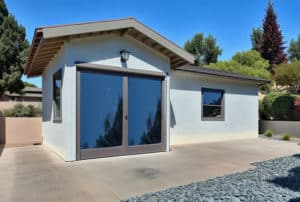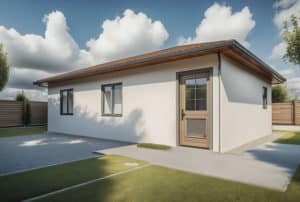





A link to download your FREE brochure will be in your inbox in 3 minutes



















The final price may vary based on project specifics.
To get a free accurate quote tailored to your needs, book a consultation with us today!

The price per square foot provided is an average and may vary depending on project-specific details such as materials, location, complexity, and other factors. Actual costs may differ from the average provided.
It is recommended to obtain a detailed quote based on the specific requirements of your project.

Please note that the monthly payment displayed on this page is an estimate and is subject to variation based on the selected loan product, applicants credit score, loan amount, and other financial details. Actual monthly payment may differ from the estimate provided.
It is recommended to seek advice from a financial advisor or loan officer to obtain precise payment information tailored to individual circumstances.
 Your Trusted
Local Contractor
Your Trusted
Local Contractor

If your house is in the coastal overlay zone, can you build an accessory dwelling unit? It’s a popular question in California because many of its residents live near the ocean. The short answer is yes. However, the regulatory landscape of coastal ADUs is a bit different. There are some additional coastal permit requirements — for example, view corridors, height, parking, and so on. These requirements vary in different municipalities.
In our article, we’ll discuss the California Coastal Commission, its impact, and its connection with ADU regulations and Local Coastal Programs (LCPs).
Generally speaking, it’s possible to construct an ADU in a coastal overlay zone. However, the regulations vary depending on the LCP to which your house belongs. In some coastal zones, the extra requirements are barely noticeable, while in others, they are very significant.
In some places, the process of obtaining building permits is available instead of ministerial. Also, it can be, if a coastal ADU has any detail that goes against the general ADU rules and regulations (for example, the property includes two lots instead of one). Appealable coastal ADUs are more costly and longer to construct, since waiting for an appeal often takes much time. Additionally, there are coastal overlay zones where the local laws don’t allow the ADU construction, but they’re not very common.
Going through an ADU permitting process in coastal overlay zones might be complicated in case of your property’s proximity to:
There are cases when an accessory dwelling unit in a coastal overlay zone can be exempt from a CDP (coastal development permit, also called coastal department review). It can happen if the ADU construction has minimal adverse effects or doesn’t have them at all.
Adverse effects can mean the following things:
So, ADU construction rules in coastal zones are stricter — for example, setbacks are significantly larger. But everything depends on your local regulations and the peculiarities of your coastal program.
Exemption from CDP means that an accessory dwelling unit is eligible for a Building Department review. Local authorities give this permit if the dwelling unit meets all the regulations of coastal or ordinary territories. Basically, it equals approval by city staff. In this case, you cannot appeal your ADU plans to the City Council or Planning Commission.
The Coastal Act of California is a generalized legislation for encouraging local authorities to use Local Coastal Programs for protection of the delicate coastal ecosystem. Moreover, this act helped to create the Coastal Commission of California that controls public access to the coast.
The Coastal Act makes the Coastal Commission promote affordable housing options for low- or moderate-income households. In particular, they encourage accessory dwelling unit construction in an existing habitable area where it isn’t harmful for the coastal nature.
Local authorities have to implement typical ADU building regulations and the Coastal Act at the same time. If an LCP policy doesn’t match the regulations, they update them to be as consistent as possible. However, this process is often rather slow and can take several years. The authorities need to make sure that all LCP amendments connected with ADUs match both ADU laws and the Coastal Act.

In case you want to build anything in a coastal zone, including an ADU, you’ll need to get a building permit (CDP). First of all, the authorities that review ADU applications find out whether anyone issued this permit for your territory earlier and whether it restricts or allows any changes to its development.
According to the new coastal zone requirements, an ADU is an accessory construction that mustn’t exceed the permitted density of the existing residential areas. Small alterations to already-existing structures don’t count as development. This means that you can freely convert a garage into an ADU if you don’t change its size or replace any of its large parts, such as exterior walls. But if you do it or construct an accessory dwelling unit of any other type, you’ll probably need a building permit.
For this, you’ll need to pay a building department permit fee, which is usually several thousand dollars.
Such alterations as expanding a single-family home (for example, an attached ADU) are typically exempt from the permitting requirements of the Coastal Act in case they can have a negative environmental impact. Conversions of an existing space also fall under this category if there are major changes in construction. As for detached structures, they don’t count as single-family residential units, so their building or alteration may not be exempt from the waiver.
In case the Local Coastal Program contains a waiver provision and the planned ADU project fits the coastal development permit standards, the local authorities can waive the permit requirement. They can allow a waiver for a detached ADU if they decide that it won’t cause any harm to the coastal environment. The term for such development is “de minimis,” which means “minimal” or “not important” in Latin. For example, an ADU can be “de minimis” if it’s tiny but situated on a spacious property lot with a big main house.
Not every LCP can allow for a coastal property waiver. However, some of them provide approval procedures that are similar to it. However, in many cases, such procedures are slower and more expensive.
In case a proposed ADU project in a coastal zone falls under the category of development and is neither subject to nor exempt from a waiver or another approval, it needs a coastal development permit. It has to fit all the LCP requirements, administrative findings, the government code, and, sometimes, the Coastal Act recreation and public access policies. The local authorities have to issue a public application notice and process the homeowner to the Local Coastal Program requirements. If it’s possible, this procedure should take up to 2 months.
After making the final decision, the authorities send the action notice to the office of the Coastal Commission. If it deems the building project appealable, the authorities approve a permit for appealing the ADU in the commission.
Usually, local regulations waive an ADU parking spaces requirement in half a mile from public transit. Three years ago the Coastal Commission removed off-street ADU parking requirements in coastal areas. The exception is when an ADU is within a limited parking territory or 500-ft coastal zone.
Yes, the California Coastal Commission certifies building granny flats in coastal zones, but to do it legally, you’ll need to obtain a coastal development permit to ensure compliance with all the regulations. There can be some additional restrictions, such as view corridors, ADU height, and so on. However, garage conversions without any alterations of major structural components don’t require this permit since their creation doesn’t qualify as development.
According to the California Coastal Act of 1976, the state’s coastal overlay zone consists of approximately 840 miles of the continental coast and 287 miles of island shores. The width of California’s coastline is 3 miles in the ocean and a maximum of 5 miles on the land, although the inland width often differs. In some places, the coastal zone is as narrow as several hundred ft.
According to California laws, all accessory dwelling units should have 4′ setbacks from the property line in the back and side parts of the lot. As for the living space size, it depends on its type. The maximum floor area limit for two-bedroom detached ADUs is 1000 sq. ft; attached or one-bedroom detached ADUs — 800 sq.ft., and junior ADUs and guest houses — 500 sq. ft.
In 2024, ADU laws got several important changes. Many of them soften the existing restrictions — for instance, the ones regarding property square footage, ADU floor area, and parking space placement. Some examples of the new regulations include Assembly Bill 1033 (permits a property owner to sell accessory dwelling units and the main home separately), Assembly Bill 976 (prevents local agencies from requiring owner occupancy for ADUs), and Assembly Bill 434 (obliges all municipality and city governments in California to make a pre-approved plan for accessory dwelling units by the beginning of the next year).
SB1077 is a bill about the distinctive features of attached and junior accessory dwelling units’ permits in the coastal overlay zone. The newest change to this document (issued in April this year) proposes the simplification of getting permits for regular and junior ADUs in coastal areas.
Get a First Look at Real ADU Projects